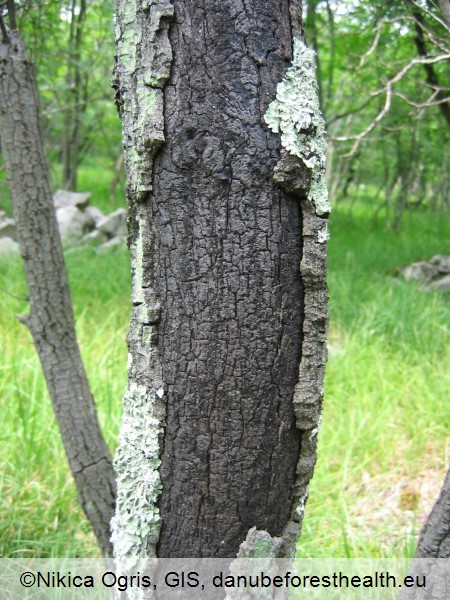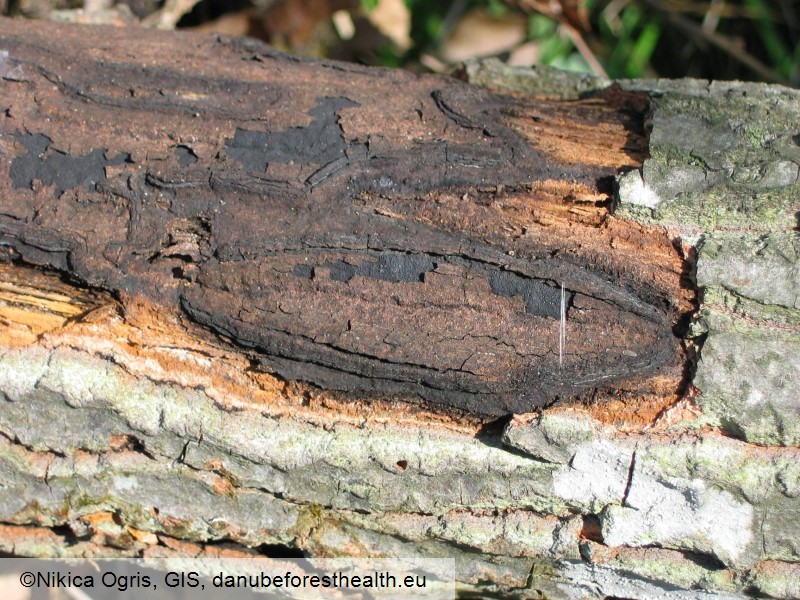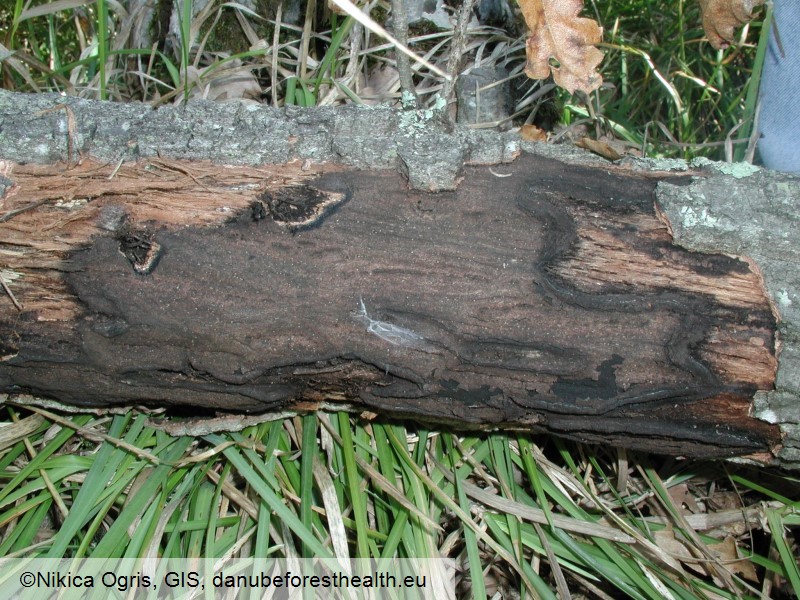Fungi
Charcoal disease
Biscogniauxia mediterranea
Nikica Ogris, Thomas Cech
|
|

Fig. 1. Black stroma under bark, bark cracks and fall off on Turkey oak

Fig. 2. Fruiting body of Biscogniauxia mediterranea

Fig. 3. Fruiting bodies can merge into larger stromatal structure
DETECTION PERIOD:
whole year
DESCRIPTION:
The endophytic presence of this fungus in living bark enables it to quickly enter the stressed tissues of the host and destroy them. The leaves in the coppice turn brown. Bark dies off in strips. Next year the bark begins to crack and falls off in June (Fig. 1). In summer a conidial stage may be produced, consisting of a pinkish-grey layer on the wood. In August the first perithecial stromata are observed in bark cracks on tree trunks and branches (Fig. 2). The fruiting bodies are flat, black, slightly convex, ellipsoid, and elongate stromata. Next spring a large number of stromata on the bark of dead trees develop; more than hundred of them can be found on a single tree and they can merge together forming a large stroma (up to 36 cm or more in length) (Fig. 3).
HABITAT:
Infects oaks (Quercus spp.), maples (Acer spp.), sweet chestnut (Castanea sativa), beech (Fagus sylvatica), plane (Platanus acerifolia), ash (Fraxinus spp.). The disease symptoms usually appear after severe drought, hot weather or fire.
STATUS:
Charcoal disease is a serious problem in cork oak (Q. suber) and Turkey oak (Q. cerris) in the Mediterranean area. However, recently it is spreading to northern territories most likely because of ongoing changes in the climate that are creating optimal conditions for its survival in areas that were previously unsuitable to it.
IMPACT:
Trees die on effected areas.
SIMILAR SPECIES:
We can mistake B. mediterranea for other species from the genus Biscogniauxia and Hypoxylon. On maples, symptoms of sooty bark disease (Cryptostroma corticale) are quite similar, however the black surface of the debarked stem is covered by brown spores. Differentiation can be done only in a laboratory by morphological and/or molecular identification.
|